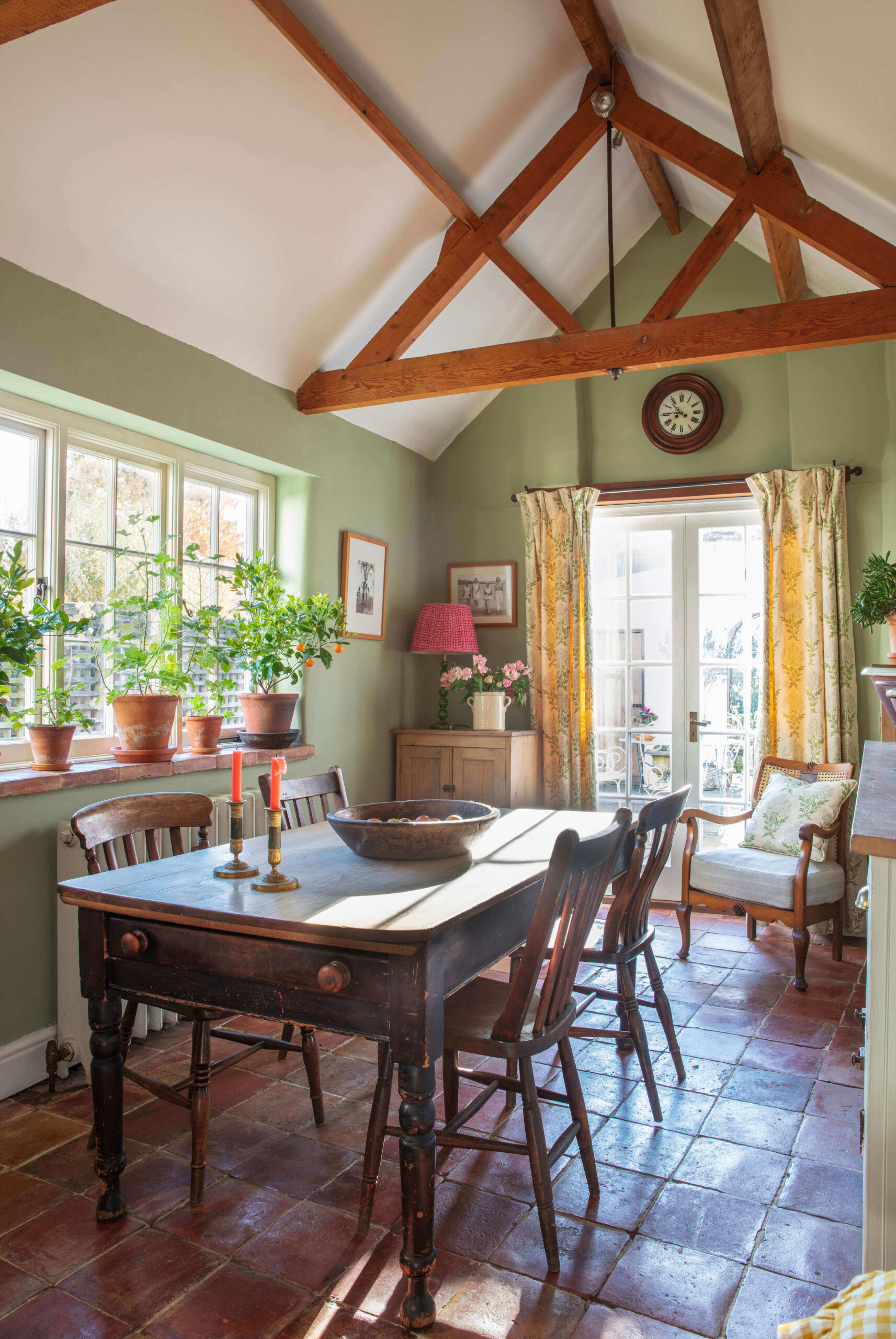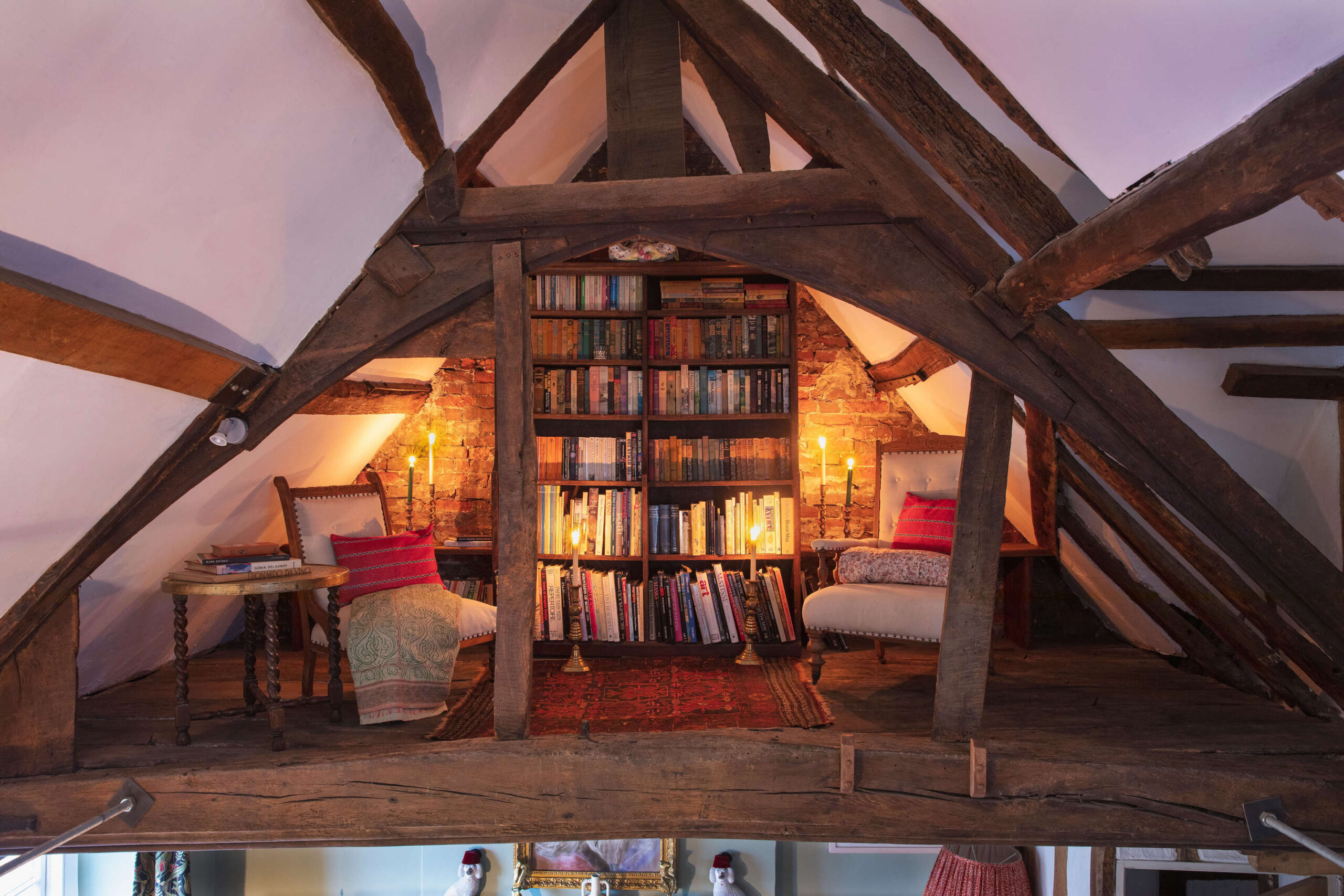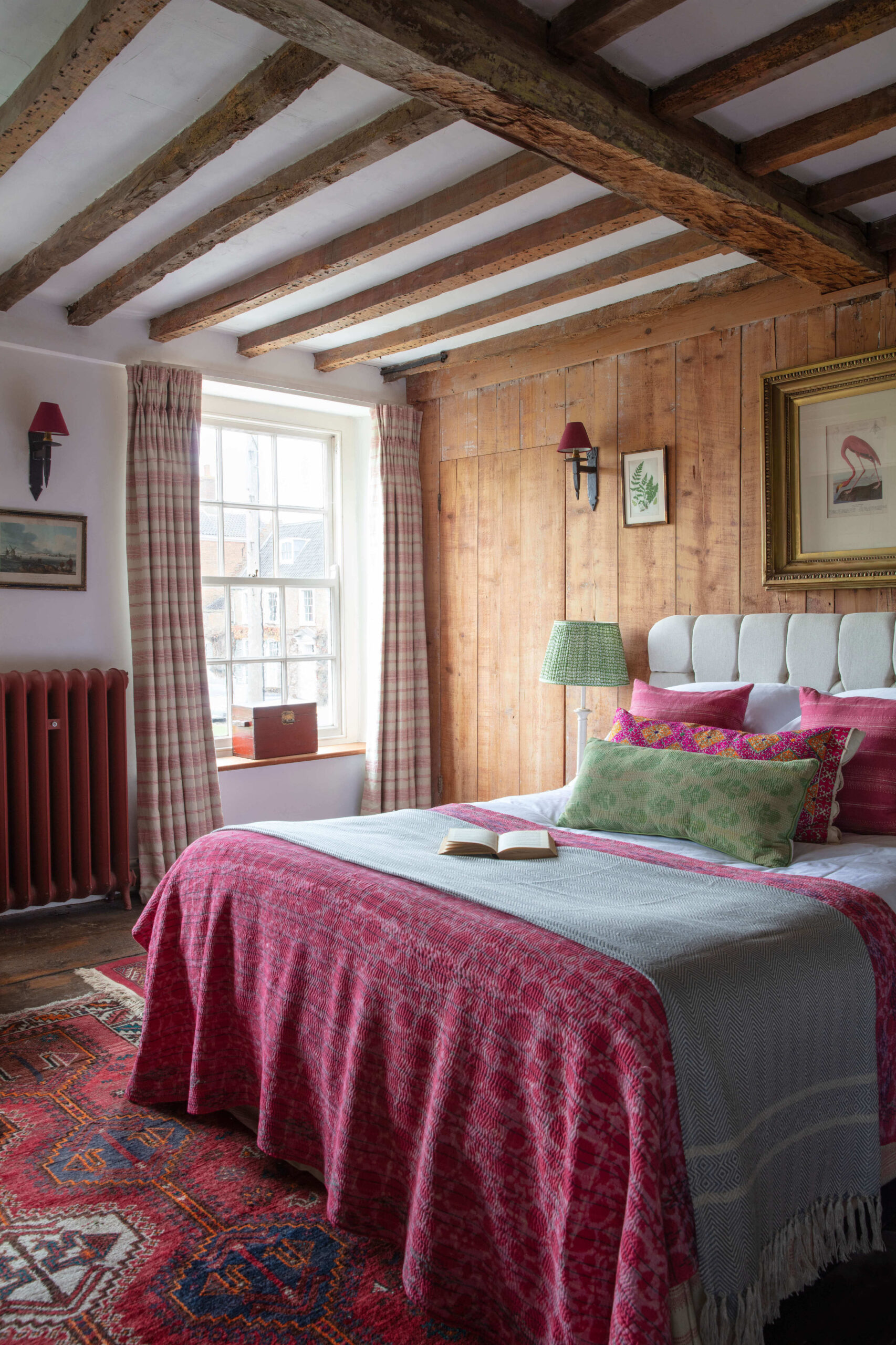Tour this Norfolk home filled with vintage and reclaimed pieces
With their mutual love of all things old and well-crafted, Louise and Sam Coster have worked together to transform their timber-framed home with salvaged pieces and beautiful antique treasures
Louise and Sam Coster are well-respected members of the salvage community – together they own Mongers in Norfolk, an architectural salvage business that shares building space with their 15th-century timber-framed home, which has later additions dating from the 16th century, the Georgian era, the 1930s and 2010.
Although the frontage of the house is Georgian, its true history was a bit of a mystery, but as Sam bravely began taking down walls, ripping up carpets and peeling wallpaper, he discovered a lot more than he could ever have imagined, as Louise explains: ‘In the main bedroom, he discovered a fireplace timeline of the ages: first there was a 1970s composite stone chimneypiece, then a Georgian design, next was one which was possibly 16th-century, culminating in the original 15th-century inglenook with the perfectly preserved family crest carved and painted above – it was the best indicator of the building’s true age.’

© Robert Sanderson
Louise’s challenge, meanwhile, was to source interesting pieces of furniture and decorative items from every era. ‘We love that we’re saving these objects from landfill,’ she says, ‘while enhancing that sense of history in our own and other people’s homes, and ensuring these beautifully made pieces have a new lease of life for many more years to come.’
‘It’s incredibly satisfying to know every inch of your home too,’ adds Sam, ‘where you have found every doorknob, every piece of wood, every book, every sofa.’

© Robert Sanderson
When you live in a house that has been extended again and again over the years, it can be a challenge to create a cohesive look but one that’s not slavishly tied to a particular period. Louise and Sam have had this conundrum to puzzle out, but with decades of combined experience working in the visual arts – Sam previously worked in theatre design in London while Louise designed fashion accessories – the pair were unfazed by the prospect of turning a unique building that spans no less than seven centuries into a comfortable home for the 21st century.
‘Using uniform architectural details such as flooring and door furniture provides continuity,’ explains Sam, who replaced 1980s floor timbers with much older boards in the rooms upstairs, while downstairs he chose reclaimed Norfolk pamments that would blend seamlessly. He also swapped modern panel radiators for refurbished cast-iron models in every room to further enhance the character of the building.
The couple are well known for sourcing salvaged sanitaryware for their clients, so it’s no surprise their own home features a restored 19th-century plunger bath upstairs, and an incredible 1890 sink in the kitchen that they saved from a local country house that was being demolished.

© Robert Sanderson
‘By creating a sense of harmony with the building and the functional elements of the house, we’ve been able to be more eclectic with our decorative choices,’ says Louise, who has confidently combined Georgian furniture, Victorian tiles, Edwardian mirrors and vintage fabrics, to name just a few examples. ‘I’m drawn to anything that’s been made by a craftsman many years ago, and I’m not afraid of a project.
A tired old chair that’s in need of reupholstering, for instance, is a joy and I love sourcing contemporary but classic style fabrics that work with these older pieces of furniture; Guy Goodfellow and Kate Forman designs are particular favourites. Sam, meanwhile, loves perusing antiquarian bookshops to add to his growing collection; old books definitely add warmth and softness to a room, as well as a window into the past.’

© Robert Sanderson
Warm reddish hues and soft green shades abound in every room of this eclectic home: lamps, throws and pillows, walls, rugs and curtains form the basis of the colour scheme, and these two complementary tones harmonise beautifully with the rich brown bones of this historic timber-framed building.
‘We’ve been fortunate to have acquired some beautiful antique rugs over the years and these tend to form the starting point of our room schemes,’ says Louise. ‘These pieces usually have warmer tones of reds and deep ochres that work perfectly with paint colours like Greenstone by Mylands, which is similar in tone to naturally occurring verdigris. I also like to use antique textiles such as kanthas [quilts from India and Bangladesh made from repurposed fabrics using the kantha stitch] as they are perfect as bed throws, but I also have a precious collection of Swat marriage pillows [embroidered cushions, made by Pakistani mothers and daughters prior to a wedding] that are predominantly rich red colours and add pattern and texture, as well as colour, to a room.
Words & Styling Naomi Jones Additional Styling Rebecca Lovatt and Karen Attwood
Before you go...
...fancy automatic entry to all future competitions?
Simply register online today for FREE and you will get:
Automatic entry to all current and future competitions.
Access to Reclaim Inspiration - an online visual pinboard for saving all your home and style inspiration.
A regular newsletter of inspiration, ideas and advice.

Save all your articles in one place
Become a Reclaim Member to save all your home and style inspiration. Simply login or register online today for FREE and you will get:
Automatic entry to all current and future competitions.
Access to Reclaim Inspiration - an online visual pinboard for saving all your home and style inspiration.
A regular newsletter of inspiration, ideas and advice.








